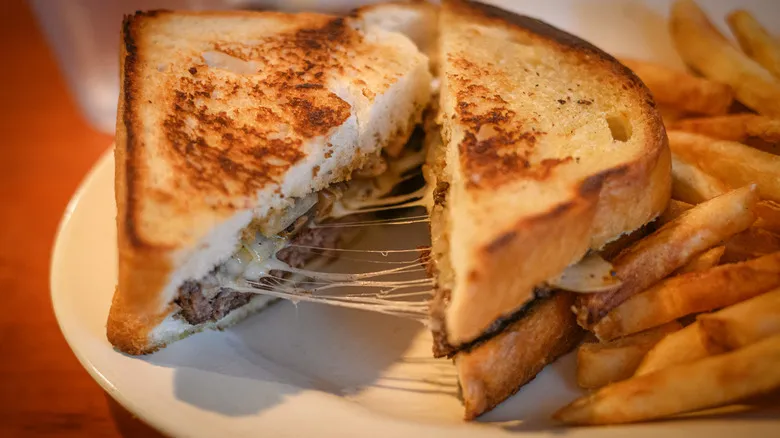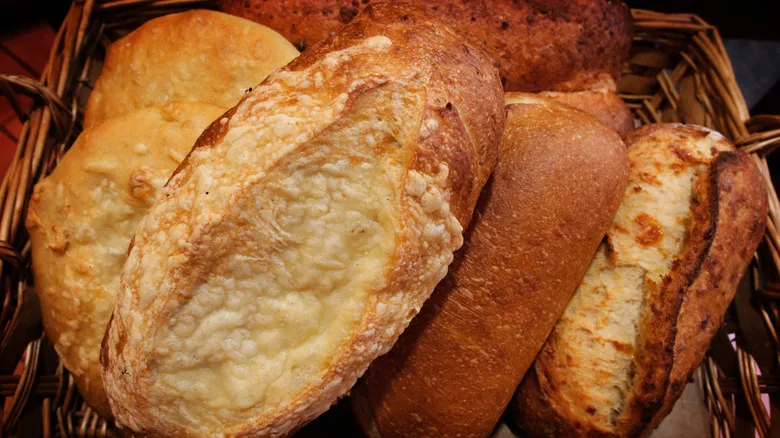From cider to seeder

When the settlers journeyed to the New World, they weren't thinking about apple pies as they packed their personal apple tree cuttings and seeds. Instead, their fondness for apple cider, which was simpler to produce than beer, led them to bring along everything needed to make cider. This ensured that they always had a supply of cider as they adjusted to their new lives in the colonies.
Over time, the saplings planted by the settlers became the basis for the apple varieties enjoyed in the U.S. today, including those used by pie makers. Long before fruit experts developed the Cosmic Crisp apple, designed to last a year, early Americans took advantage of apples' natural ability to cross-pollinate with other varieties. This phenomenon sparked a surge of new apple types in America during the 1700s.
One notable figure in this story is John Chapman, better known as "Johnny Appleseed," who played a significant role in establishing apples as an iconic American fruit. His efforts to distribute apple seeds and cultivate apple trees spanned from Pennsylvania to Ohio in the late 18th and early 19th centuries. Once nearly absent in America, aside from crab apples, apples became a fundamental part of American culture and the inspiration for countless new apple pie recipes.
Changing apple pie recipes

The oldest pies in the world were savory, with the first recorded apple pie recipe appearing in England in the late 1300s. The contrast between the 14th-century apple pie and the modern American version is significant. The early pie was not sweetened with sugar and included not only apples but also pears, figs, and raisins. Instead of the familiar ground cinnamon used today, saffron was the preferred spice.
In those early days, apples were not always sweet, making them less suitable for the type of pie we think of today. This changed in 1870 when a seedling of the red delicious apple was discovered in America and eventually cultivated. Such advancements in apple cultivation contributed to America's reputation as a nation of pie enthusiasts.
As for the delightful apple pies we enjoy today, complete with all-butter crusts, they were not always a reality. In earlier times, pie fillings were encased in a crust called a "coffyn," which resembled dinnerware more than a tasty pastry—essentially inedible. To create a crust that could be enjoyed, American settlers turned to German and Dutch immigrants for guidance. They learned to make a pie crust that was flaky, buttery, and, most importantly, delicious. From that point on, apple pie in America transformed, giving rise to a distinct culinary identity that continues to thrive.
Becoming as American as apple pie

Apple pie recipes were indeed included in the book "American Cookery," published in 1796. Authored by Amelia Simmons, this cookbook presented not just one, but two distinct recipes for apple pie. The inclusion of apple pie in America's inaugural cookbook undoubtedly established the dessert as a legitimate American dish. Released approximately 20 years after the nation achieved independence, the book led newly formed Americans to associate apple pie with their liberation from Britain and, eventually, with Independence Day.
The status of apple pie in American culture received an additional boost when it was referenced in a 1928 New York Times article highlighting First Lady Lou Henry Hoover's culinary skills. During World War II, soldiers also declared that their motivation to fight stemmed from a love for "mom and apple pie."
However, it may have been a 1924 advertisement in the Gettysburg Times for New Lestz Suits that truly solidified apple pie's status as a quintessentially American dessert. The ad proclaimed that the suits were "as American as apple pie." Just as Coca-Cola helped shape the modern image of Santa Claus, this advertisement played a significant role in branding apple pie as an all-American treat.
Recommended

Cotton Candy Was Once Affectionately Called Fairy Floss

Granola Vs Muesli: What Makes Them Different?

How The Patty Melt Became A Beefy Diner Staple

Does Panera Make Its Bread Fresh?
Next up

